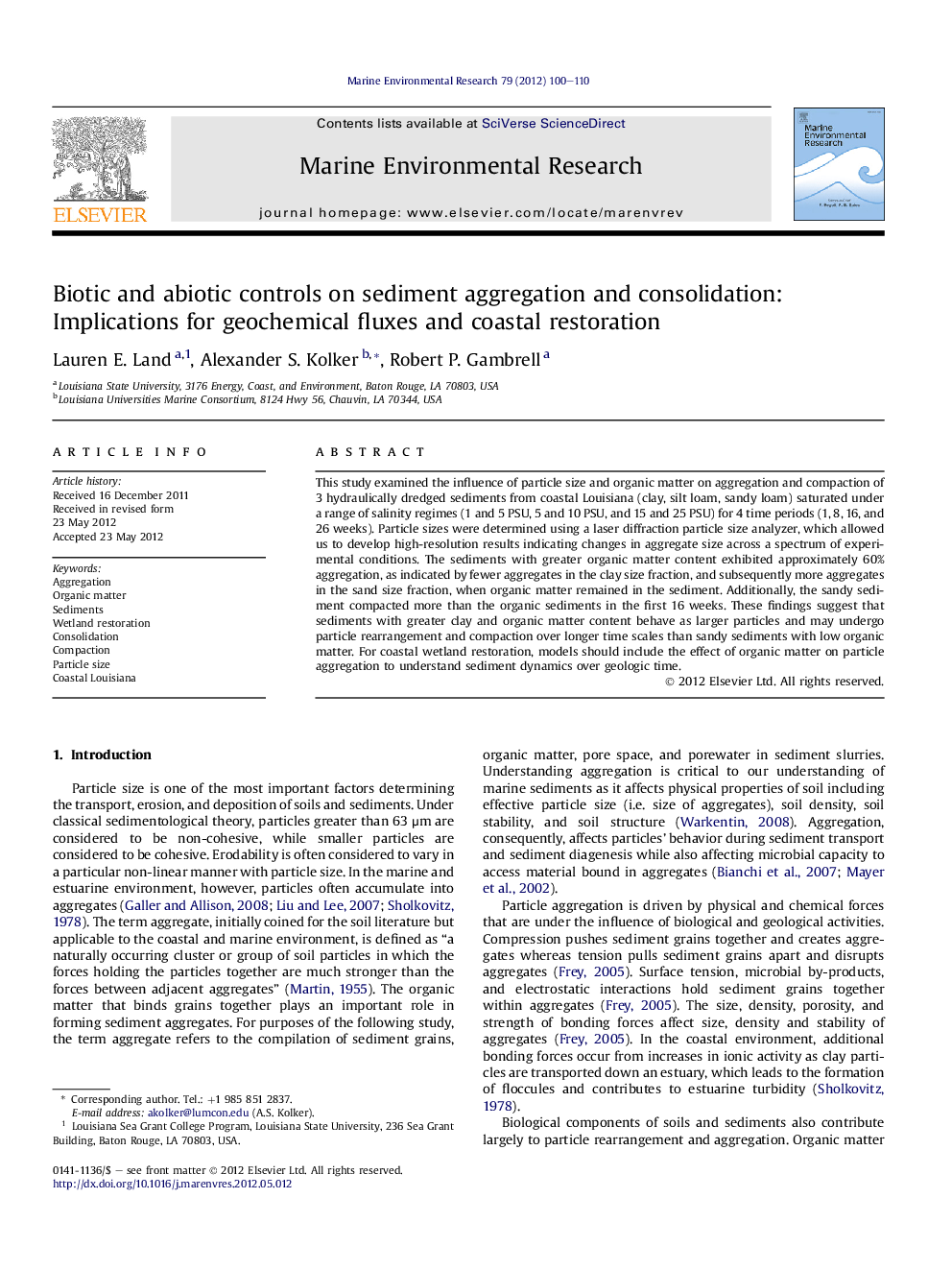| Article ID | Journal | Published Year | Pages | File Type |
|---|---|---|---|---|
| 4550989 | Marine Environmental Research | 2012 | 11 Pages |
This study examined the influence of particle size and organic matter on aggregation and compaction of 3 hydraulically dredged sediments from coastal Louisiana (clay, silt loam, sandy loam) saturated under a range of salinity regimes (1 and 5 PSU, 5 and 10 PSU, and 15 and 25 PSU) for 4 time periods (1, 8, 16, and 26 weeks). Particle sizes were determined using a laser diffraction particle size analyzer, which allowed us to develop high-resolution results indicating changes in aggregate size across a spectrum of experimental conditions. The sediments with greater organic matter content exhibited approximately 60% aggregation, as indicated by fewer aggregates in the clay size fraction, and subsequently more aggregates in the sand size fraction, when organic matter remained in the sediment. Additionally, the sandy sediment compacted more than the organic sediments in the first 16 weeks. These findings suggest that sediments with greater clay and organic matter content behave as larger particles and may undergo particle rearrangement and compaction over longer time scales than sandy sediments with low organic matter. For coastal wetland restoration, models should include the effect of organic matter on particle aggregation to understand sediment dynamics over geologic time.
► Freshwater and intermediate sediments exhibit approximately 60% fine aggregation. ► Linear relationship between % organic matter and % fine aggregation of raw sediments. ► Clayey and organic sediments compacted over the entire experimental time frame. ► Organic matter and particle size distribution yield varying compaction curves. ► Particles in the freshwater sediment aggregates become more cohesive over time.
